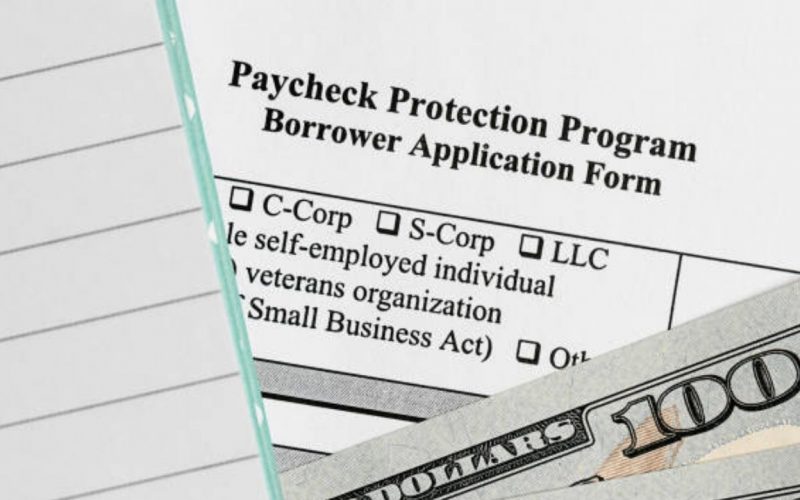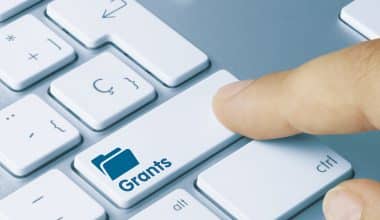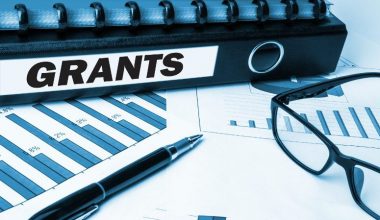The SBA microloan is one of the few low-cost small-business loans available to new businesses to expand their business, new and current firms can borrow anything from $1,000 to $50,000.
Unlike other SBA loans, the microloan program is entirely funded by the federal government and operated by a nonprofit network of community-based lenders rather than traditional banks.
The SBA microloan program intends to target lower-income areas and businesses that are often overlooked by regular lenders through these lenders.
During the first year, intermediaries are not required to pay any interest on the Microloan, but interest begins to accrue from the date the SBA disburses the loan proceeds to the intermediary. The SBA then establishes a payment schedule for recurring payments. The loans must be paid back within ten years. If you need the SBA microloan funding, read on to learn all that you need to know about the SBA microloan program.
What is SBA Microloan?
The Small Business Administration (SBA) offers microloans to small businesses. Small business owners who meet the criteria can borrow up to $50,000, but most loans are significantly lower.
While the SBA provides funds for the microloans, an intermediate lender, usually a nonprofit community development corporation, does the actual job. The lender is in charge of processing applications, distributing loan cash, and overseeing the loan.
With SBA direction, each intermediary lender responsible for the SBA microloan can determine its own rates and eligibility conditions, so rates, fees, and minimum loan amounts will vary.
Working capital, inventory, supplies, furnishings, fixtures, machinery, and equipment can all be purchased with SBA microloans.
SBA Microloan Lenders
To provide finance to small businesses, the SBA works with certified intermediary lenders around the country. By accessing the SBA microloan portal, you can find a list of intermediaries in your area.
SBA Microloan Program
SBA MicroLoans program is tiny loans given to start-up, freshly established, or growing small businesses, as well as certain non-profit childcare centres. The Small Business Administration (SBA) makes funding accessible to nonprofit community-based lenders (Microlender Intermediaries), who then issue loans to qualifying borrowers in amounts up to $50,000.
SBA Microloan Cares Act
The SBA Microloan Care Act was enacted to provide prompt relief to small businesses with non-disaster Small Business Administration loans, specifically existing SBA 8(a), 504, and Microloans.
Under the microloan care act, the U.S. Small Business Administration will automatically be responsible for payments on eligible loans, including principal, interest and fees, for a period of six months.
- For existing borrowers with a 7(a), 504, or Microloans, the U.S. Small Business Administration will automatically cover loan payments including principal, interest, and fees, for a period of six months.
- For new borrowers, the U.S. Small Business Administration will cover loan payments, including principal, interest and fees, if the borrower applies for and receives a 7(a), 504, or Microloan prior to September 27, 2020.
Who is Eligible for Microloan Program?
Each intermediate lender has its own credit and lending criteria. However, business owners considering applying for a microloan should be aware that most intermediaries will want some form of collateral as well as the business owner’s personal guarantee.
A microloan can have a maximum period of six years. Loan terms, on the other hand, vary depending on the size of the loan, the intended use of money, the intermediary lender’s requirements, and the demands of the small business borrower. Interest rates vary based on the intermediary lender and the Treasury Department’s fees to the middleman.
How to Apply for SBA Microloan
The first step in applying for an SBA Microloan is to locate an SBA-approved intermediary in your area. The SBA provides an intermediary search tool that identifies lenders in each state to make your search easier.
The lender determines whether you can apply for a microloan online. To apply, some lenders may ask you to come into their offices, while others will require you to call one of their loan professionals. When you apply, you will most likely be requested for some documents.
SBA Microloan Documents
Here are the documents for the SBA microloan application (some of which may not be required if your company is new): :
- Personal tax returns (at least two years).
- Recent pay stubs.
- A list of collateral.
- Business plan.
- Cash flow projections.
- Contracts, quotes or purchase agreements.
Existing businesses will also need to keep track of their financials, which may include the following:
- Business tax returns.
- Balance sheet and income statement.
- Business lease and contracts.
- Business licenses and permits.
- List of current business assets.
Depending on the organization, the complete application and financing procedure can take anywhere from a few weeks to a few months. Even if training isn’t necessary, most of these organizations provide lectures, workshops, and one-on-one mentorship on a number of topics.
SBA Microloan Requirements
Businesses must, however, generally meet the following criteria:
- Be a for-profit small business (non-profit childcare centers may also be eligible)
- Located in an area served by the lender
- No bankruptcies or foreclosures in the last one to two years
- Have sufficient income to support loan repayment
- Good payment history with other business or personal creditors (suppliers, landlords, etc.)
- Demonstrate need for financing and/or inability to get bank financing
In essence, SBA microlenders will lend to businesses that aren’t bankable or those that don’t meet a bank’s qualifying requirements. This includes enterprises with insufficient experience, startups, businesses with poor credit or financial records, and business owners with poor or below-average credit.
Many SBA microlenders have minimal or no limitations for the age of the company, the business credit score, or the personal credit score of the owner.
In general, SBA microloan lenders will examine the following variables when making a loan decision.
Creditworthiness:
When you apply for a mortgage or auto loan, a bank or credit union will check your credit history. When you apply for an SBA microloan, the lender will do the same. However, don’t allow poor credit history to deter you from applying. Even if you have a bad credit history, you might be able to get a loan.
Collateral :
You can use business or personal property as collateral, such as equipment or a vehicle. If you are unable to repay the debt, the lender has the authority to seize and sell your property as payment for the loan.
Business plan:
A simple business plan may be required by the lender to demonstrate how you intend to use the funds and your financial projections for the future.
Possibility of repayment :
Lenders want to know that if they approve your application, you’ll be able to repay the loan. If you’re just getting started, you may need to present financial estimates as well as an estimate of future revenue. Keep in mind that the maximum length is six years and varies depending on the lender.
What Can You Use a Microloan For?
SBA microloans can be used for:
- Working capital
- Inventory or supplies
- Furniture or fixtures
- Machinery or equipment
SBA Microloan Terms, Interest Rates, and Fees
The terms of SBA loans vary depending on a number of factors:
- Loan amount
- Planned use of funds
- Requirements determined by the intermediary lender
- Needs of the small business borrower
The maximum repayment term allowed for an SBA microloan is six years. Interest rates vary, depending on the intermediary lender and costs to the intermediary from the U.S. Treasury. Generally, these rates will be between 8 and 13 per cent.
Conclusion
SBA Microloans are an excellent, low-cost source of finance for entrepreneurs who have tried and failed to obtain credit facilities from other sources. Small business entrepreneurs who need small loans have a hard time getting traditional finance. For example, the average SBA 7(a) loan amount is $368,737 (the 7(a) loan is the SBA’s most common type of loan).
If you’re a small business owner on a tight budget, an SBA Microloan could be the solution.
FAQs on SBA Microloans
How do I use a SBA microloan?
Microloans can be used to assist small businesses to expand for a variety of reasons. Use them when your small business needs less than $50,000 to rebuild, reopen, repair, enhance, or improve.
What do I need to apply for microloan?
Work with an SBA-approved intermediary in your area to apply for a Microloan. All credit decisions and terms for your microloan are made by SBA-approved lenders. Contact your local SBA District Office to find an authorized microlender near you.
What is a microloan?
The microloan program offers loans of up to $50,000 to small enterprises and certain non-profit childcare centres to help them start-up and grow. A typical microloan is around $13,000.
What are SBA Microloan amount
The SBA Microloan program allows you to borrow up to $50,000, although the average loan size in 2017 was $13,884. SBA Microloan intermediaries provide loans as low as $500.






